16 The Best Breathing Exercises
Introduction
For most people, breathing is one of the most basic human needs. Your blood cells take up oxygen when you breathe in, and they release carbon dioxide. Following being recycled by your body, carbon dioxide exits it as waste.
Breathing is not only an exercise that strengthens the lungs in general but also a voluntary function of the autonomic nervous system. They may be beneficial to those with normal lungs as well as those with impaired lung function. The goal of breathing exercises is to strengthen particular respiratory control mechanisms. They are frequently utilized to help with relaxation, reduce stress, and encourage better breathing.
Breathing exercises try to modify breathing patterns in a controlled way, which may offer certain health advantages. To affect your body and mind in ways other than just breathing, they entail using various breathing patterns and techniques. Observing your breathing is one of the best ways to relieve tension and anxiety. If you put basic breathing exercises into your daily routine, they can have a significant impact.
Try one of the many anxiety-reduction breathing techniques the next time you feel anxious. Learn how to use breathing techniques to reduce anxiety and stress. They are basic to perform after you learn the technique and don’t need guidance from professionals. All that’s required to experience the health benefits of breathing exercises is regular practice. But after you’ve finished the breathing exercises, get in touch with your doctor straight away if you experience any kind of pain.
The Advantages:
Breathing techniques support our healing in plenty of ways. They offer several benefits in terms of mental, emotional, physical, and psychological well-being.
The following benefits of breathing exercises;
- Improve the way you breathe.
- To relieve anxiety and tension
- Improved physical capacities
- By strengthening the breathing-controlling muscles while improving airflow, the respiratory system should be developed.
- Regular breathing exercises have been related to increased focus and concentration.
- They not only help us remember things better, but they are also helpful in making choices.
- Breathing exercises are beneficial for people with hypertension since they frequently lower blood pressure. Heart issues and stroke are less likely as a result.
- By using breathing techniques, we can calm our minds and relax our bodies. They play a role in letting go of tension and worry.
- Therefore, breathing techniques encourage restful sleep.
- Breathing exercises help the body’s removal of carbon dioxide and harmful gases, helping in the detoxification process.
- lowering stress and improving muscle tone during exercise.
- Through the development of the body’s defense mechanism, breathing exercises increase immunity.
Before you start, remember the following advice:
- Select a place to practice your breathing technique. It could be in your bed, in a comfortable chair, or on the living room floor.
- Don’t push it. Your stress level may rise as a result of this.
- Try to finish it at the same time once or twice a day.
- Put on casual clothing.
- Completing different breathing exercises only takes just a few minutes.
- When you have more time, you can do them for ten minutes or longer to get even greater benefits.
The Most Effective Breathing Methods:
It is easy to get started. All you need is a quiet place where you can concentrate on your breathing. You can regularly practice a few breathing exercises;
Breath Focus
- You can lie down or have a seat somewhere comfortable.
- Bring attention to every breath, without trying to change the way you breathe.
- In a sequence of deep and regular breaths, repeat a few times.
- See if there are any differences in the patterns of regular and deep breathing.
- Pay attention to how your abdomen expands when you inhale deeply.
- Observe how the experiences of superficial and deep breathing are different from one another.
- Take some time to practice deep breathing.
- With your stomach still relaxed, put one hand under your belly button and feel how it rises and falls with each breath.
- Every time you let out a breath, let out a loud sigh.
- Start the breath concentration exercise by imagining deep breathing while focusing on a relaxing word or expression.
- Breathe in this way for a maximum of 5 minutes.
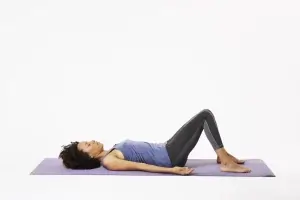
Breathing in Resonance
- Sit down and close your eyes.
- Seal your mouth and take six slow, gentle breaths using your nose.
- Avoid taking in too much air.
- Take a six-second breath out, letting the air leave your body naturally and gently without using any force.
- Breathe in this way for a maximum of five minutes.
- Continue keeping yourself still for some time, focusing on the sensations in your body.
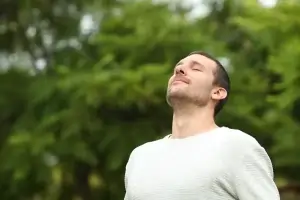
Deep Breathing
- On the ground, take a comfortable sitting position.
- Using your nose, take a breath.
- Let the air settle in your belly.
- Use your nose to exhale.
- Place a hand over your stomach.
- Position the other hand across your chest.
- Inhaling causes your stomach to expand.
- Let go of your breath and feel your stomach drop.
- The hand on your abdomen ought to shift as much as the hand on your chest.
- Take three more deep, full breaths.
- Breathe deeply as your belly expands and contracts with each breath.
- Continue in this manner of breathing for no more than five minutes.
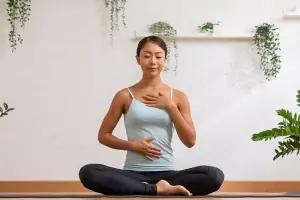
Progressive Muscle Relaxation
- Comfortably lie down on the ground.
- Breathe deeply a few times to help yourself calm down.
- Generate in a deep breath.
- The heel’s muscles would have to be tense.
- Breathe out.
- Breathe in deeply.
- Make your calf muscles tight.
- Release your breath.
- There should be no compression in your lower legs anymore.
- Elevate your body progressively.
- Be sure that every muscle in your body is pulled.
- Your arms, shoulders, neck, face, fingers, belly, and chest are all included in this.
- Spend no more than five minutes breathing in this way.
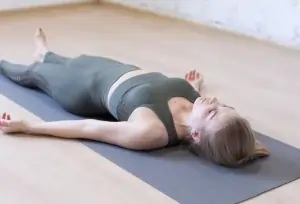
4-7-8 Inhalation
- Maintain a straight back and find a comfortable sitting position.
- Press the back of your upper teeth with your tongue, and hold it there.
- As you release all of the air through your mouth and around your tongue, give a whoosh sound.
- If it is easier, touch your lips.
- For four counts, cover your lips and breathe in through your nose.
- For seven counts, hold your breath.
- Make a whoosh sound and exhale fully through your mouth for eight counts.
- Breathe in this way for a maximum of five minutes.
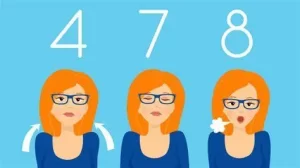
Box Breathing
- Exhale slowly so that all of the air is out of your lungs.
- Inhale with your nose while mentally counting to four slowly.
- Pay attention to how the air feels in your stomach and lungs.
- For four counts, hold your breath.
- For another four counts, exhale.
- Hold your breath for four counts again.
- Breathe in this way for a maximum of five minutes.
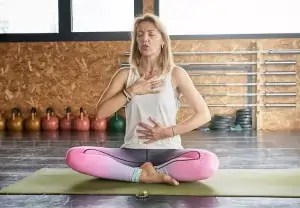
Humming bee breath (Bhramari)
- If you’re going somewhere quiet, you could start with a meditation pose.
- Stretch your shoulders while sitting with your spine straight.
- To perform Bhramari Pranayama type 1, close your eyes and take a deep breath through your nose.
- Now, while maintaining control over your breathing, release the air gradually and carefully, producing a sound like a bee buzzing.
- This is one type 1 Bhramari Pranayama round.
- Repeat this process two or three times.
- Put your hands on your face with the middle finger on the sides of your nose, the ring finger above your lips, the index finger slightly touching the inner corners of your eyes, and her slightly lower.
- One thumb should be placed on each cartilaginous structure(inner ear).
- Make sure the eyes are only lightly compressed.
- Lower your hands, hit the low- to medium-pitched Bhramari six more times, and note the result you get.
- This is the type 2 Bhramari Pranayama round.
- Breathe in this way for a maximum of five minutes.

Sitali breath
- Sit with your legs crossed or in any other comfortable position.
- Whatever position you have where you sit, make sure your shoulders are relaxed away from your body, your tummy is smooth, your spine is long, and your chin is nearly parallel to the floor.
- Take two or three deep breaths through your nose and out of it to warm up for this breathing exercise.
- Forming a tube or taco shape, roll your tongue and curl its outermost part inward toward the center.
- Between your closed lips, extend the tip of your tongue.
- If you are unable to roll your tongue, make a little “o” shape with your lips by pressing them together tightly.
- To make sure that the air you are taking in passes over your tongue in this situation, press it against the back of your bottom teeth.
- You can also move your tongue back so it rests on the tip behind your upper teeth, instead of placing it on the roof of your mouth.
- Breathe in slowly, as if you had been consuming air through a straw, via the tube your tongue has formed.
- Inhale deeply until your chest and belly both expand.
- Release the air into the “o”-shaped space created by your pursed lips.
- Close your mouth and gently release the breath with your nose.
- Breathe in this way for a maximum of five minutes.
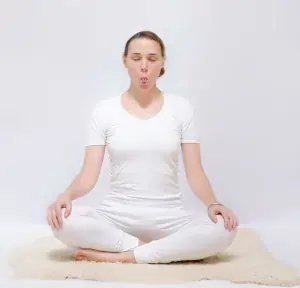
Equal breathing
- Choose a comfortable seating position.
- This time, inhale with your nose and exhale.
- By counting, make certain the length of each inhalation and exhalation is the same.
- Alternatively, with every breath in and out, repeat a word or short sentence.
- If it makes you feel better, you could add a little time for maintaining your breath after each inhalation and exhale. (Breathing causes pauses that happen naturally.)
- Repeat this breathing exercise for five minutes or more.
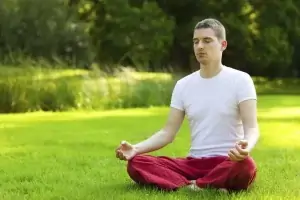
Alternate nostril breathing
- Choose a comfortable sitting position.
- Lift your right hand to your nose while extending your fingers, pushing your middle and index fingers into your palm.
- When you’re done breathing out, gently close your right nose with your thumb.
- Breathe out of the left side of your nose and close it with your right pinky and ring finger.
- Breathe out via your right nose and drop your thumb.
- Close your right nose after inhaling it.
- Release your grip on the fingers and take a breath out of your left nose.
- In this, there is just a single process.
- Take at least five minutes to breathe in this way.
- Finally, release the exercise with a left-side exhale.
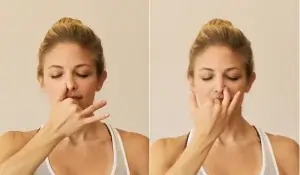
Lion’s breath
- Sit comfortably so that your hands are resting on your knees or under your thighs and your back is straight.
- Press your hands against your knees while spreading your fingers wide.
- After taking a deep breath using your nose, spread your eyes broad.
- Spread your lips wide and stay out of your tongue simultaneously, bringing your tongue closer to your chin.
- Contract the muscles at the front of your chest to release the breath with a long “ha” sound.
- You can adjust your attention to the space between your eyebrows or the tip of your nose.
- Breathe in this way for a maximum of 5 minutes.
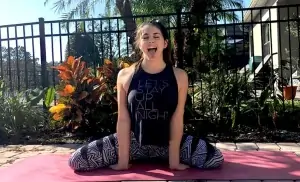
Diaphragmatic breathing
- Settle into a comfortable chair with your knees bent and your shoulders, head, and neck relaxed.
- Place one hand on your upper chest and the other directly below your rib cage.
- It gives your diaphragm a more natural feeling when you breathe.
- Breathe slowly and deeply through your nose until your hand is pressed against your stomach.
- Try to do your best to keep the hand remaining on your chest.
- When you breathe out through pursed lips and tighten your abdominal muscles, your stomach will come back.
- You should keep the hand on your upper chest as still as you can.
- Breathe in this way for no longer than five minutes.
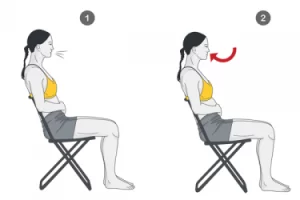
Pursed lip breathing
To Do Pursed lip Breathing:
- Your neck and shoulders should relax.
- Seal your mouth and take a slow, two-second breath with your nose.
- Breathing normally is fine; deep breathing is not required.
- It might help to count on yourself.
- As you breathe in, your stomach will slowly fill up.
- For some, there are benefits to placing their hands on their stomachs.
- As though you were going to softly blow on a hot beverage or create a soft whistle, purse (pucker) your lips.
- Gently, with pursed lips, release your breath for four or more seconds.
- It might help to count on yourself.
- Your stomach should get shorter the more you exhale the breath.
- Breathe in this way for a maximum of five minutes.
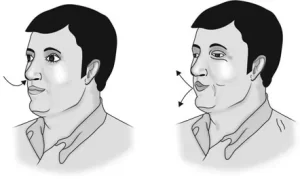
Ocean Sounding Breath( Ujjayi Pranayama )
- It is suggested that you perform while seated.
- Breathe in via your nose.
- Make a soft “ha” sound, similar to an ocean wave, as you slowly release the breath.
- It’s simpler to produce the sound while exhaling with your mouth open if you’re a beginner.
- Imagining yourself getting up a window with your breath is a useful body signal for this.
- As you get better at it, try breathing out without opening your mouth.
- Continue until you start to feel relaxed.
- For no more than five minutes, continue breathing in this way.
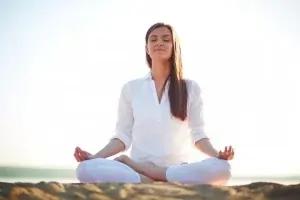
Buteyko Breathing Technique (BBT)
- Take a straight seat and stretch your back in a relaxed manner.
- To start, inhale carefully and slowly a few times.
- Take a quiet, calm breath, and then softly seal your nose. Hold your breath.
- We relate to this as the control pause.
- As soon as you feel the need to breathe (you start to feel “air hungry”), gently open your nose and inhale slowly and deeply.
- Even though you may feel your diaphragm compress strongly, try not to worry or scream.
- Return to regular, even breathing for a minimum way for up to five minutes
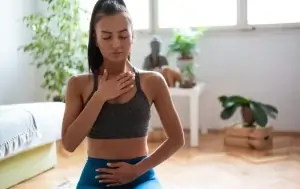
The Fire Breath exercise
- Begin by sitting with your legs crossed.
- Elevate your posture.
- On your palms facing up, put your hands on your knees.
- As you breathe, you can also feel your belly rise by placing your hand there.
- Experience your belly expand as you inhale using your nose.
- Squeeze your abdominal muscles and exhale loudly and deeply via your nose.
- Maintain the same length of inhalations and exhalations.
- Continue until the pattern feels natural to you.
- Maintain the rhythm by taking passive inhalations and active exhalations.
- To practice, repeat multiple times.
- Now speed up your breathing in and out. Make sure to exhale loudly and powerfully.
- Take five minutes at least to keep breathing in this manner.
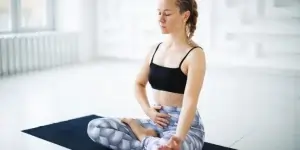
Think about taking a break from exercising and discontinue if you:
- Chest pain is being felt.
- You’re having a fever.
- Feeling weak.
- Your arm, jaw, shoulder, neck, or chest are all hurting or feeling pressured.
- If you’re feeling lightheaded or have unclear vision.
Summary
The majority of these breathing techniques can be used right. Experiment with all kinds of breathing methods for some time. Be careful to plan precise times at least twice a week. You can do these kinds of things all day long. Your breath is one of your best weapons against everyday stress, existential angst, and frustration.
You’ll probably start to feel better after you’ve mastered the art of skilled breathing in and out. You might have observed an improvement in your confidence and strength. Breathing exercises help reduce anxiety by resulting in a relaxation response and stimulating the parasympathetic nervous system, which controls breathing.
By taking relaxed, deep breaths, you can improve your oxygen intake, manage your breathing, and lessen your anxiety symptoms. These breathing techniques are simple to perform and are lightweight. It helps to do these exercises several times when you feel comfortable. Using such strategies in difficult or stressful situations will become easier as a result of the possible development of muscle memory.
There are many advantages to increasing the awareness of and applying breathing exercises into our daily routine, such as promoting peace of mind, sharpening focus, and maximizing performance.
FAQ:
Which physical activity is most effective in improving breathing?
Among the beneficial physical activities are the following: Walking: begin each week with a few minutes and work your way up. Maintain your muscles’ flexibility by stretching. Use small hand-held dumbbells for weight training.
What breathing technique works the best?
Abdominal breathing that is concentrated. belly breathing, also known as abdominal breathing, stimulates the nervous system and raises the amount of oxygen that reaches your brain, which results in a calmer state of mind.
What breathing technique is 4 7 8?
The 4-7-8 breathing technique involves four seconds of inhalation, seven seconds of holding the breath, and eight seconds of exhalation. This breathing technique tries to ease anxiety or facilitate sleep. It’s a variation of pranayama, the yoga of controlling breath.
How am I going to strengthen my lungs?
Get involved in regular exercise.
Keep going drinking water for yourself and eating a balanced diet.
Avoid outdoor air pollution.
Increase the quality of the air on the inside.
Give up smoking. (and stay away from indirect smoking)
Get annual check-ups
How many breathing exercises do you perform daily?
At first, perform this exercise three or four times a day for five to ten minutes each time. Increase the time of this exercise progressively, and think about adding challenges by using a piece of paper to support your belly.
What makes the lungs weak?
Numerous factors can contribute to respiratory failure. Situations that restrict your ability to breathe in and fill your lungs with air include: A few examples are weakness after a stroke, collapsed airways, and food fragments lodged in the respiratory tract and restricting it.
Are breathing techniques effective?
Breathing techniques are beneficial for managing stress and its related problems. Controlling your breathing is also necessary for some types of meditation and physical activities like tai chi and yoga. Breathing exercises are popular because they help people relax while lowering stress.
Which breathing rate works best, faster or slower?
In the two categories, slow respiration at 6 breaths per minute was found to be the most effective way to improve alveolar ventilation, reduce space, and increase arterial oxygen saturation while maintaining ease of breathing and environmental responsibility.
Could we practice belly breathing all day?
This breathing technique should be done three to four times a day for five to ten minutes at a time. A person can begin practicing diaphragmatic breathing while seated or standing once they feel comfortable doing so.
What is peaceful breathing?
The daily habit of breathing smoothly, slowly, and calmly is known to be peaceful breathing. Sitting up straight is usually better to bending over or lying down because it allows your lungs to fill with more air. Placing your arms on your lap or the side arms of a chair is the most effective approach to “take the weight” off your shoulders.
My breathing is heavy; why is that?
Low blood carbon dioxide levels are the result of excessive breathing. Many of the signs and symptoms of hyperventilation are put on by this. When experiencing a panic attack, for example, you might breathe heavily due to a psychological factor. Alternatively, a health issue like bleeding or infection may be the cause.
How long should breathing exercises be performed?
As much as three or four times a day, perform these. Spend five minutes finishing each activity. You can use these breathing exercises to help you feel better when you are having problems breathing after you know how to do them. You can exhale more deeply with your next breath if you purse your lips when you breathe.
When is the most suitable time of day to practice breathing techniques?
The best results are likely to come from regular scheduling of it into your daily routine. You can perform this on your feet while sitting in a back-supporting chair, or you can lie down on a yoga mat or bed. The maximum level of comfort that you can afford.
What time of day is perfect for breathing exercises?
Early on in the day
The ideal time to perform breathing exercises is believed to be in the early morning, right before breakfast. The body and mind are refreshed after a night’s sleep, allowing focus on the breath. Breathing slowly at the beginning of the day can help relax your body and calm your mind.
Does breathing reduce stress?
Because breathing exercises simulate the sensation of a relaxed body, they can help with relaxation. One of the best methods to reduce bodily stress is through deep breathing. This is to ensure your brain receives the signal to relax and calm down when you breathe deeply.
Can you fall asleep utilizing breathing exercises?
Understand how breathing exercises can help you sleep better both before and after you go to sleep. You can improve the quality of your sleep, which improves your overall health, simply by including these activities in your nightly routine.
Which organs are used in the breathing procedure?
The lungs are the respiratory system’s primary organ. The trachea, the nose, and the breathing muscles (the diaphragm and the intercostal muscles) are additional respiratory organs.
What is the breathing cycle?
The two main phases of pulmonary ventilation are expiration and inspiration. The processes of inspiration and expiration are what allow air to enter and exit the lungs, respectively. One series of inspiration and expiration is called a respiratory cycle.
Are breathing exercises safe?
Exercises involving breathing have many positive health effects and almost no negative effects. They are easy for you to do and don’t require much help from experts once you understand the technique. Regular practice is all that is needed for experiencing the benefits of breathing exercises for health.
How does breathing function?
Functional breathing, to put it simply, is breathing that adjusts to activity and rest beneficially. Compared to when we exercise or become stimulated, we should breathe much less when we are at rest.
How does breathing affect the brain?
Your sympathetic nervous system, which gets activated by deep breathing and relaxation, is responsible for sending messages to your brain informing it that you are safe and do not need to activate the run, leave, or Freezing response. Breathing deeply allows more oxygen to reach the brain responsible for thought.
References:
- Cronkleton (2023) March 24. Ten Breathing Techniques to Lower Stress and Other Emotions. Breathing exercises are covered on the Healthline website. Internal citation: (Cronkleton, 2023)
- CCPCC, S. A. M. ( 2023 January 27). Nine Breathing Methods for Lowering Anxiety. Abdominal breathing (2584115) – Very well Intelligence – https://www.verywellmind.com Inside text reference: (Lcpc, 2023)
- Fowler, P. ( 2018 January 11). How to Breathe Less Stressfully. WebMD. Stress-reduction breathing exercises: http://www.webmd.com/balance/handling-stress Internal citation: According to Fowler (2018)
- Majsiak, B. June 23, 2022. An Introduction to Breathwork Techniques. DailyHealth.com. Ways to practice breath-focused meditation can be found at https://www.everydayhealth.com/alternative-health/living-with/
Reference within the text: Majsiak, 2022 - Image 1, [A. P. Ryt, March 19, 2020]. Three Parts to Practicing the Yoga Breath (Dirga Pranayama). Very, very well fitted. This is a Pranayama series breath drill, consisting of three parts (3566762). Citation inside the text: Ryt, 2020
- Image 2, Breathing is Free, Necessary, and Life-Changing | Sober Living Journal. (As of now). Breathing is free, necessary, and transformative. https://www.thebridgenyc.net/post/
In-Text Citation: (Breathing: It’s Free, It’s Needed, and It’s Life-Changing | Sober Living Journal, n.d.) - Image 3, The Health Benefits of Deep Breathing for Your Body and Mind. 2023 March 7. United States: Art of Living. Breathing exercises can help you develop deep breathing, which has several benefits.
- Image 4, A. Major (n.d.). Three Methods of Gradual Muscle Relaxation to Lower Anxiety. Hypnosis with Andrew Major. How progressive muscle relaxation can help lower anxiety: https://www.andrewmajorhypnotherapy.co.uk/blog/
Reference within the text: Major, n.d. - Image 5, J. Kahn (n.d.). Stress Management Using 4-7-8 Breathing in Less Than 90 Seconds: Integrative cardiologist Joel Kahn, MD. The Kahn Longevity Center Blog: Managing Stress Through 4-7-8 Breathing in Under 90 Seconds
Reference within the text: Kahn, n.d. - Image 6, Clinic, C. March 19, 2024. How to Reduce Stress with Box Breathing. Cleveland Medical Center. Benefits of box breathing: https://health.clevelandclinic.org/box
Reference inside text: (Clinic, 2024) - Image 7, P. L. 21 April 2023. Bhramari Pranayama, Bee Breath. A Retreat Center dedicated to the Art of Life. Bhramari Pranayama, The Art of Living Retreat Center Bee Breath // Citation within the text: (P, 2023)
- Image 8, Sitali breathing technique. [date unknown]. Excellabrasive.com https://www.sopbyt.top/products.aspx?cname=sitali+breathing+technique&cid=112
Reference within the text: (Sitali Breathing Technique, n.d.). - Image 9, Tumanova, Yulia (May 11, 2018). How to Incorporate Breathing Exercises into Your Yoga Practice with Pranayama. Pinterest. 340936634287204541 / https://in.pinterest.com/pin/
Reference within the text: Tumanova (2018) - Image 10, Cooper, M. (February 15, 2017). Healthy Zen. https://healthyzen.com/alternate-nostril-breathing/. Alternative Nostril Breathing
In-text Reference: Cooper (2017) - Image 11, Sugerman, L. (May 4, 2021). Let Go of Your Inner Bull! Your Step-by-Step Manual for Lion’s Breath Is Here. AlignedTM by You. This is a tutorial for the pose “Simhasana” in the lion’s breath pranayama on Youaligned.com.
Citation within the text: Sugerman, 2021 - Image 12, Position: sitting; breathing pattern: diaphragmatic. (As of now). The abdominal diaphragmatic breathing position is a part of the exercises offered by https://www.workoutsprograms.com.
Reference within the text: (Sitting position. Diaphragmatic breathing in the abdomen, n.d.) - Image 13, Nursing Management of Patients with Thoracic Disorders, Jaypee Digital, n.d. Chapter 23 of Jaypee Digital.com’s book 9789352500574
- Image 14, W. D. Atmanirvana, 2023, October 19. The Ocean Breath for the Mind and Body is Ujjayi Pranayama. Hinduism | India’s Spiritual Blogs | Enhanced Awareness | Awakening Individuals | Subliminal Mind Power | Mindfulness Meditation |. The ocean’s breath, or ujjayi pranayama, is good for the mind and body.
Citation inside the text: (Atmanirvana, 2023) - Image 15, Pickford, L., and Pickford, L. June 14, 2023. Buteyko Breathing Unpacked: Use This Effective Method to Reduce Anxiety. Yogajala: https://yogajala.com/techniques/buteyko-breathing
Reference within the text: Pickford & Pickford, 2023 - Image 16, Try the yoga pose known as “Breath of Fire,” a breathing exercise that relieves stress. March 18, 2022. Pose in yoga. Try the breath of fire as a stress-relieving breathing exercise at https://yogapose.com/articles/
In-text citation: (Experience Breath of Fire, a Stress-Reduction Breathing Exercise – Yoga Pose, 2022)

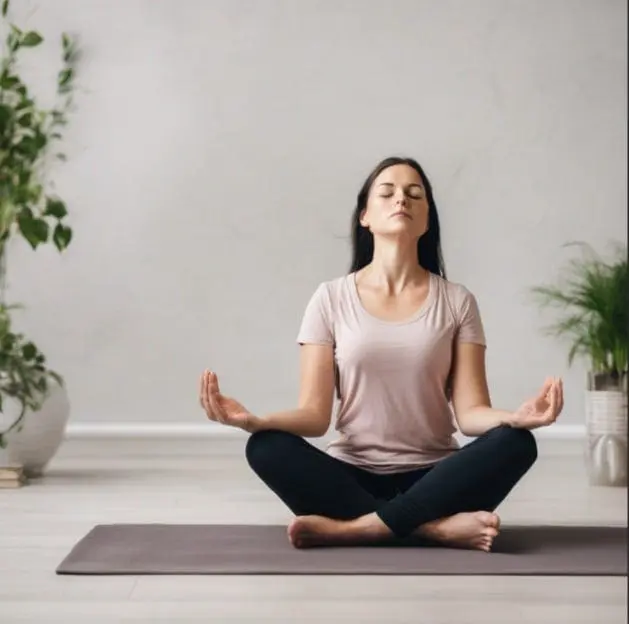
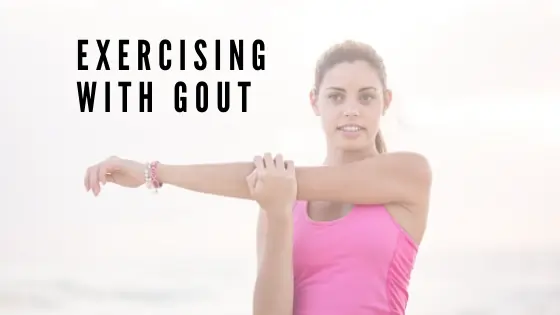

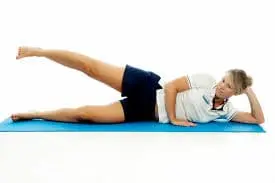
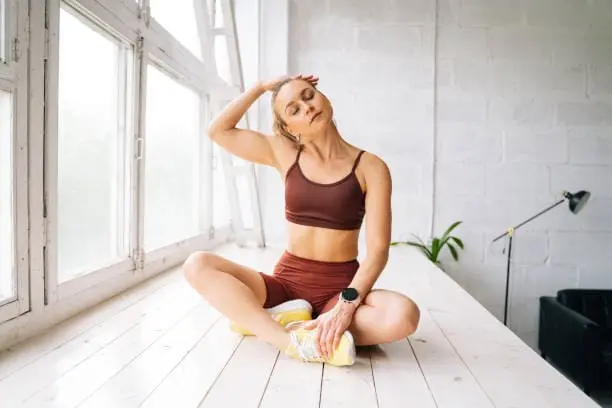
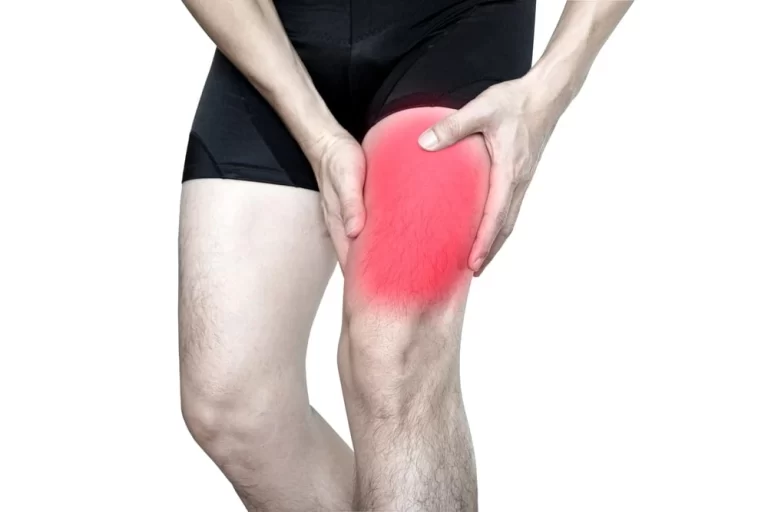
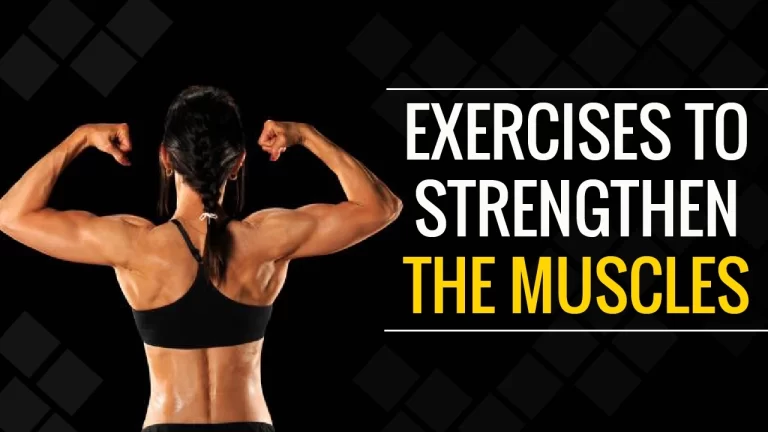
15 Comments